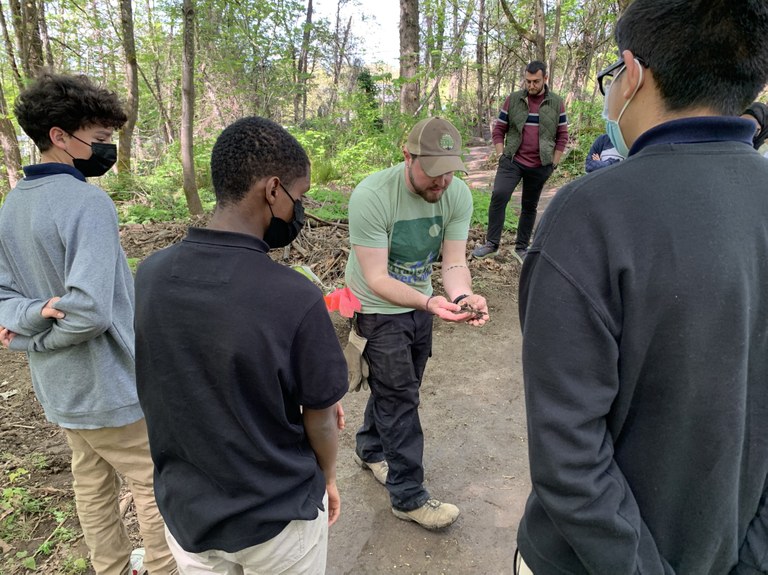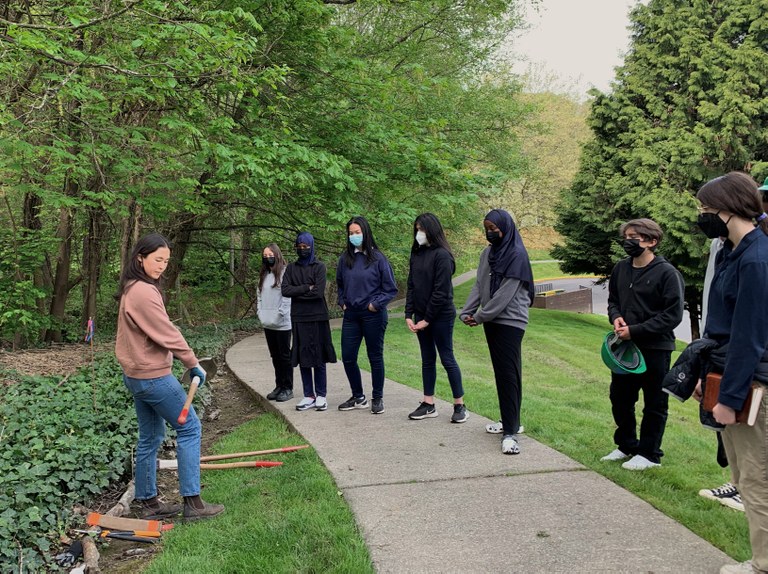 Washington Trails
Association
Washington Trails
Association
Trails for everyone, forever
How I worked with WTA to understand more about connections between natural areas in neighborhoods, public health and nearby schools. By Anna Caudill
Glendale Forest Park, in unincorporated North Highline, is one of the first areas that King County acquired to address inequitable access to green space and improve health outcomes under its Open Space Equity Initiative. Since the county purchased the land, WTA has been working with King County Parks and other organizations to develop a trail system within the park.
I first learned about Glendale Forest Park in my graduate program at the University of Washington. One of my goals for graduate school was to merge my interests in public health and outdoor recreation into a career focused on outdoor equity.
When I learned more about Glendale, which is part of WTA’s Trail Next Door campaign, I knew I wanted to get involved, and so I decided to focus my capstone project on it. This past year, I had the joy of working with WTA and Rainier Prep to connect eighth-grade science students with Glendale Forest Park. I hope my work is the first step in continued partnerships to engage students in the park for years to come.

WTA’s Kaci Darsow (above) and Leina Seeley (below) met with students from Rainier Prep to talk about soil ecology and trail building. Photo by Anna Caudill.
Glendale is a particularly attractive site for a new green space because Rainier Prep, a public charter middle school, is less than half a mile away. Glendale Forest Park and Rainier Prep are also located in an area that experiences the highest levels of environmental health disparities in Washington and, until now, did not have public open green space within a quarter mile.
WTA’s Krista Dooley and Allie Tripp agreed to work with staff at Rainier Prep. Together, we decided to work toward three goals:
Students filled out baseline surveys to give us some initial insights into what they thought about health, nature, community and learning. Then, I worked with students on engagement activities in Glendale Forest Park and the classroom. On a sunny day, I walked with students to Glendale, where WTA’s Kaci Darsow and Leina Seeley showed us the portion of the trail built so far, taught us about soil ecology and explained the tools WTA uses to build trails.

They also gave students a tour of the trails WTA has built so far in the area. Photo Anna Caudill.
Later, we cozied up in the classroom on a rainy day. I talked with the students about the connection between parks and health. I also shared information about the Glendale Park’s development and showed photos of the work.
We chatted about King County Parks’ Open Space Equity Initiative, which was what made the purchase of the park land possible. Students talked about what they’d recently learned about racial restrictive housing covenants (like redlining) in social studies class and wondered if that had anything to do with the lack of parks and green space in south King County. It certainly does — and we had a really engaging conversation about how structural racism influences the built environment and health.
Students completed a follow-up survey the week after our time together. From the results of both surveys, I saw that students overall feel happy spending time outside and that they’re making connections between what they learn in the classroom and what they see in the “real world.” It reinforced the value of green spaces like this.
The students also had ideas that could help future students. They’ll be graduating from Rainier Prep, but they pointed out that Glendale Forest Park is a good resource for students to use for science, social studies or P.E. class.
I believe that outdoor experiences build community and build individuals into leaders and communicators, able to champion conversations and strengthen and sustain healthy communities. It’s been exciting and rewarding to be a part of this pilot project, to work with WTA and Rainier Prep and to spend some time with students in the park after a few long years of virtual learning. I’m excited to see where this partnership goes in the future.
And as I’m also graduating to the “real world,” I’m so grateful for the opportunity to have learned with and from these students and been a part of connecting kids to Glendale Forest Park. I hope that the work encourages more connections between the community and the park and that Rainier Prep students can learn at Glendale Forest Park for years to come. I’ll take what I learned into my career in public health and outdoor equity.